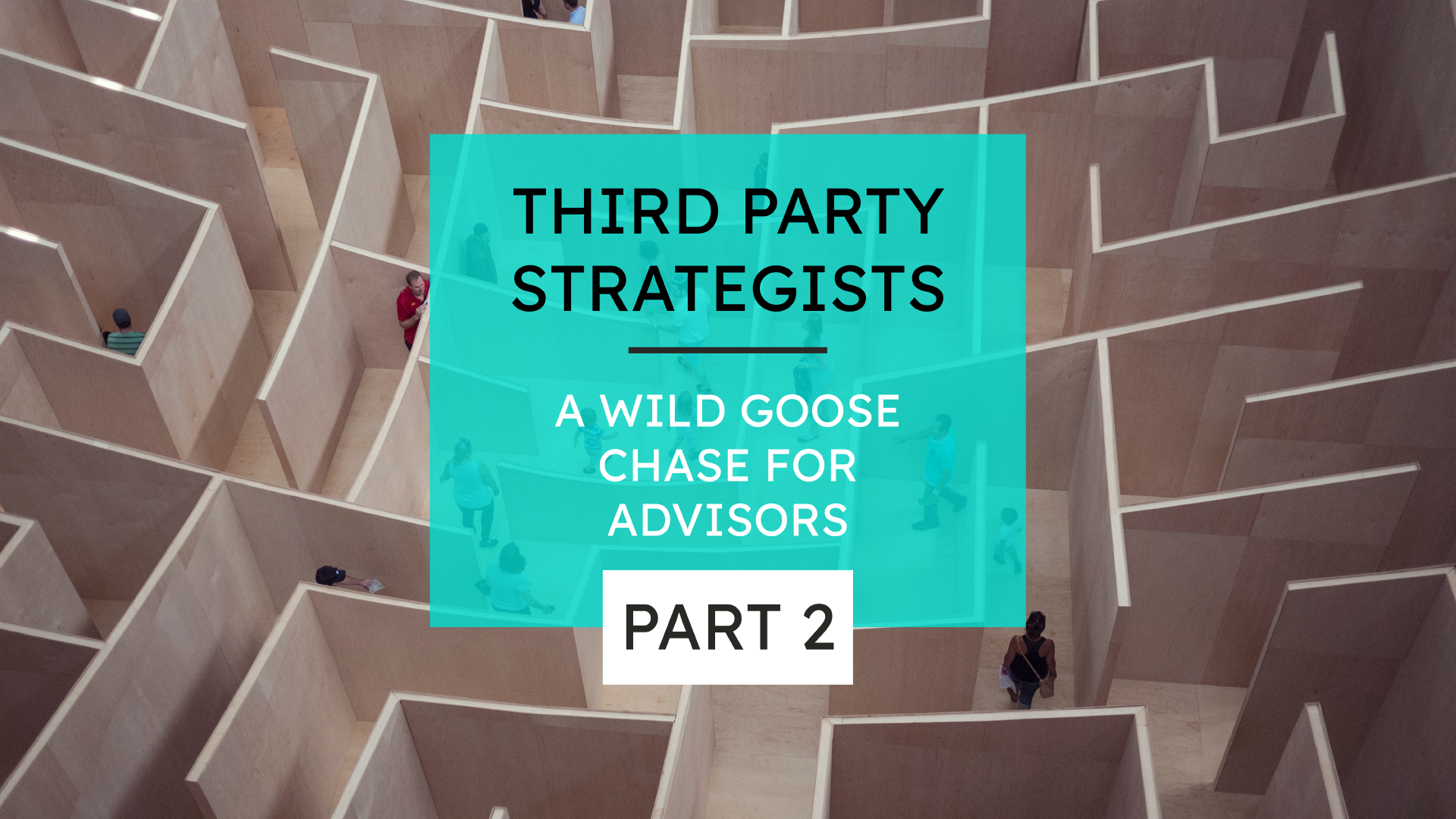
When was the last time you felt like you were on a wild goose chase?
We suspect if you’ve tried looking for a third-party strategist to manage assets for your advisory firm recently, you know this feeling quite well. In fact, here at Potomac, we’ve put ourselves in your shoes just to see how difficult finding a money manager would be.
First, we searched Google. No dice.
Then we tried custodians. The recommendations they gave felt more like “as seen on TV” solutions.
What about other advisors? Networking only takes you so far.
Strategists Database? Sure, if you have thousands of dollars lying around you’d like to throw at the problem and don’t mind mining your own data.
All this running around was tiresome, but here’s what we learned.
There is no great way for advisors to find a good third-party strategist on their own.
Scattered Search Results
The first step in this process was putting ourselves in the advisor’s shoes. If we were to begin looking for a third-party strategist , we’d begin with Google. We might search for “third party strategist,” “investment strategist,” or “TAMP manager.” But what returned from this search was a grab bag of paid advertisements and scarcely related articles on topics ranging from leadership styles to soccer coaching to perfecting your espresso brewing process.
Because we understand how Search Engine Optimization (SEO) works, this was not completely unsurprising. For a third-party money manager, tactical manager, strategist—whatever term you want to use—to show up in this type of search, they must have a website that is optimized with these key words to show up on the first page of a Google search.
Long story short: the Google search is throwing your dart at a very big board. So, we moved onto the next most logical option.
Custodian Recommendations
As an advisor, you likely have most of your assets under one custodian. So why not ask your relationship manager at that custodian for recommendations? To be completely transparent, you will get answers here. Most custodians have their own list of managers or strategists to recommend, with some being their own models.
But, here’s the catch. They’re all the big-name companies that everyone has access to. Do you really want your ‘management’ solution to be a commodity?
As a solo advisor, or advisor working with a small team, pairing up with one of these mammoth corporations for asset management risks commoditizing you right out of the game.
If you distinguish yourself as being a boutique advisor–and by default run your business on the premise that small and independent are good qualities to look for in an advisory firm–choosing the big-box name can undercut both your business model and your credibility.
So, we thought: If the custodian is of little help, why don’t we go see what other advisors are doing?
Advisor Networking or Cocktail Party Conversation?
Here is the solution we’re all banking on at this juncture: asking for recommendations from other advisors. Surely, if we can muster a few names, we can begin our research and choose a practical provider.
So where can we find a big group of advisors? The most obvious answer are conferences (at least, back when we had those).
But, not so fast. Conferences may be teeming with advisors and industry professionals, but they aren’t always geared toward the smaller, independent RIA. They are geared toward the larger firms who work with a broker-dealer or have three or four compliance officers on staff.
REALITY CHECK: They are geared toward the type of advisors who work with the straegistson the list your custodian gave you – because they are the sponsors of the conference!
So, now you’re back to square one…
Let’s assume we find and attend an event where we can meet with a handful of advisors who offer boutique services just like we do. We start with polite banter, ask about one another’s practices, and then ask the million-dollar questions:
- Do you outsource to any good strategists for third-party money management?
- AND – Can you hook me up?
If you’re lucky, you may get a recommendation. The advisor might even tell you about his or her great experience. But the problem is that this is no more reliable than a stock tip given at the same cocktail party.
There is no follow-up, no phone call to tell you if things eventually go awry with this provider. You’ll never know if they fall out of favor or for what reason.
This one and done type of advice could lead to a lot of lost time and frustration, so take these recommendations with a grain of salt and perform your own due diligence before signing on.

Strategist Database
We’ve exhausted the above resources and now we’re on to a deeper, DIY approach. Mining data from software companies who track money managers and provide performance reports on each. There are a number of third-party services, or “middle men,” who offer access to data from Morningstar SMA, Informa, Advisory World, YCharts, and more. For a fee, you gain access to go through and nit-pick their data.
While this seems the most reliable option on our list thus far, there are three problems inherent in this route:
1) It’s costly. Some companies charge as much as $20K for this type of access. Others might be more reasonably priced, in the low thousands, but you might just get what you pay for. Their software could be slow, clunky, or hard to navigate. In addition, making combinations of strategists may not even be a function they offer.
2) It’s a DIY endeavor. You’re welcome to go down the rabbit hole, but it may feel a little like Wonderland down there. You’ll need to spend a good deal of time working through the reports to narrow down your choices.
3) You can’t measure the qualitative aspects of a strategists from quantitative results.
It doesn’t matter if you show a prospect the best returns record in history. If they don’t like you, or you don’t add the value they need, they aren’t going to work with you.
And sometimes even real numbers can be deceiving when taken out of context.
When “x” company shows its best performance, was it a time at which they should have? Or did something go terribly wrong, and they earned the award for best quarter by actually making investment decisions outside of their mandate?
In our opinion, you need to know everything about the company before mining the data. The numbers should be used to validate the results, not the other way around. You want to use the numbers to see if their results match what they’re advertising.
Catching the Goose
In short, this is HARD. There is simply no great way to catch this wild goose on your own!
What we learned on this journey, and what we can confirm with certainty is this: you need a investment strategist that works as hard as you do. One that pays attention to detail and is completely transparent in sharing how those details are accounted for in their investment strategies.
With that in mind, Potomac is now doing this work for advisors. You’d think an investment strategist wouldn’t be in the business of recommending other investment strategists. But:

We’ve done the work to perfect this process, and we feel it’s our duty to share.
Whatever path you take, don’t sell yourself (and what your entire practice stands for) out by partnering with a huge commercial TAMP. Find one that is going to reflect the job you do in the rest of your practice.
Disclosure: This information is prepared for general information only and should not be considered as individual investment advice nor as a solicitation to buy or offer to sell any securities. This material does not constitute any representation as to the suitability or appropriateness of any investment advisory program or security. Please visit our FULL DISCLOSURE page.
